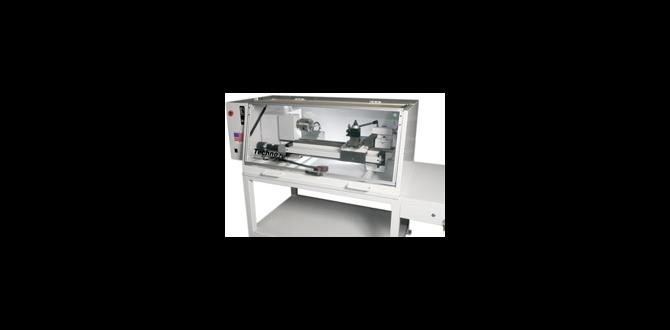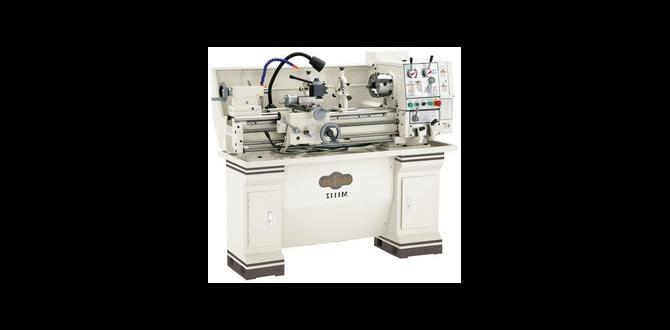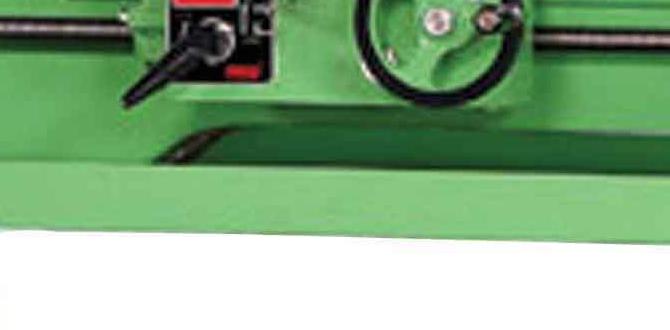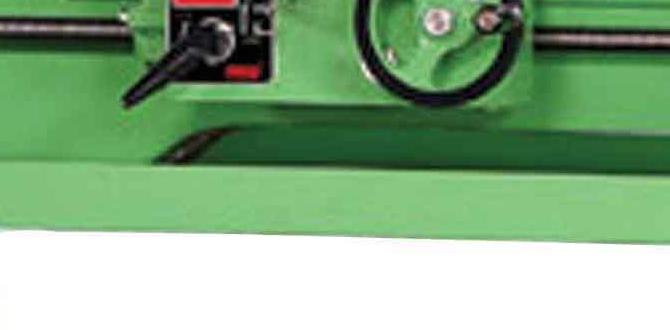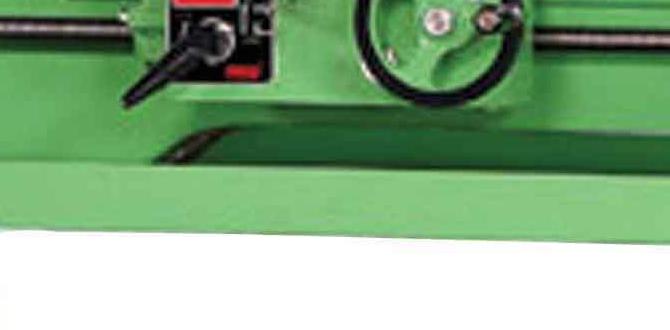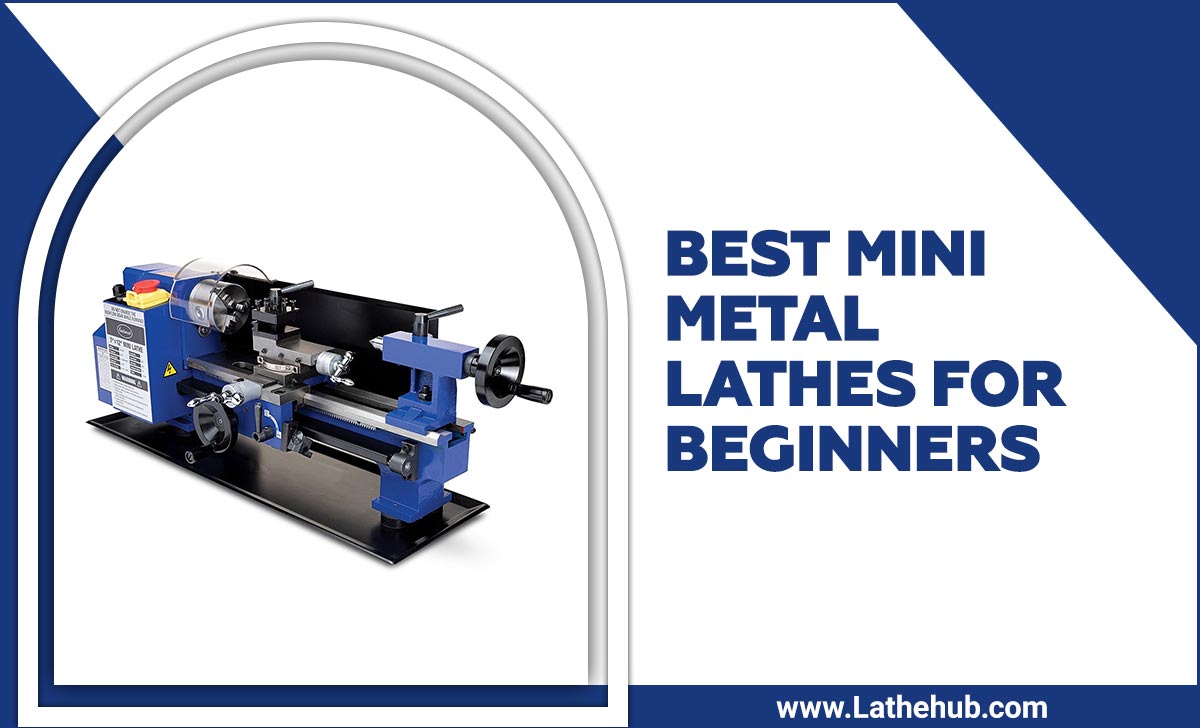A midi lathe is a powerful and versatile tool for any woodworker or craftsman. It is a type of lathe smaller than a full-size lathe but still provides a wide range of capabilities.
The term “midi” refers to its medium-sized design, making it a perfect compromise for those who need a lathe that is not too small or too large. This lathe type is handy for turning small to medium-sized projects, such as bowls, pens, and spindles.
Its compact size makes it ideal for workshops with limited space, and its affordability makes it a popular choice for hobbyists and beginners. However, don’t let its size fool you, as a midi lathe has features and functionalities that can rival its larger counterparts. Here, we will delve into the details of a midi lathe, from its components and design to its uses and advantages. So, let’s get started and discover what makes a midi lathe a valuable addition to any workshop.
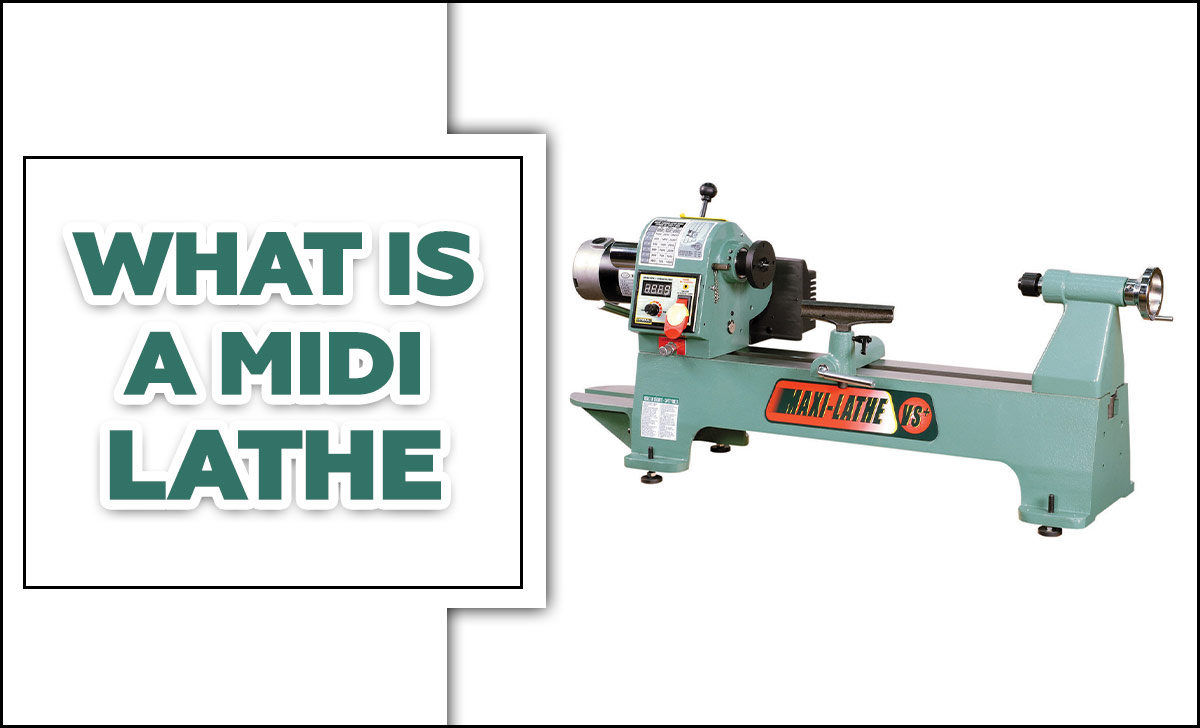
What Is A Midi Lathe & How Does It Work
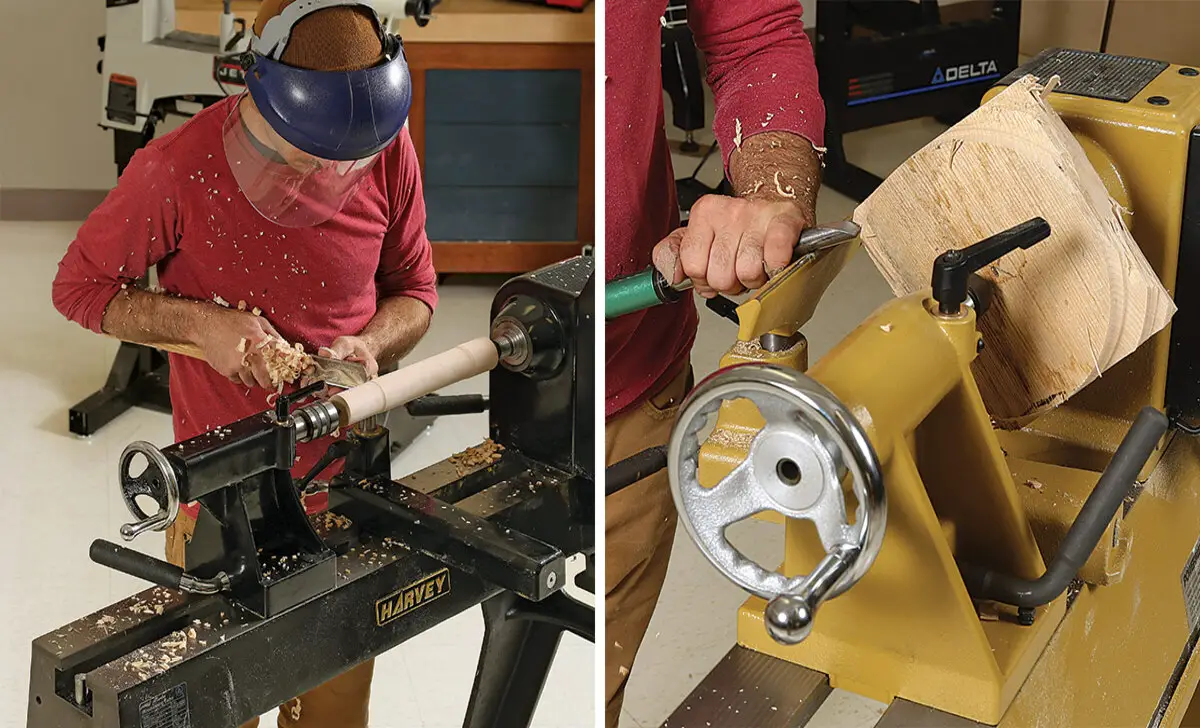
A midi lathe is a versatile woodworking tool that allows craftsmen to create intricately turned objects such as bowls, spindles, and pens. It is a smaller version of a traditional lathe, designed for hobbyists and professionals who have limited space or require portability.
The working principle of a midi lathe is simple yet effective. It consists of a motor, headstock, tailstock, and bed. The motor rotates the workpiece securely between the headstock and tailstock on the sturdy bed. The user chooses the speed and shapes the workpiece using turning tools. The lathe’s ability to pivot the headstock and tailstock enhances its versatility.
Components And Features Of A Midi Lathe

A MIDI lathe is a versatile tool commonly used by woodworkers and craftsmen to shape and turn wood into various objects. This lathe type is smaller than a full-sized lathe but offers many of the same features and capabilities. Let’s take a closer look at the components and features that make up a MIDI lathe:
- Headstock And Tailstock: The headstock and tailstock are two of the main components of a midi lathe. The headstock houses the motor, pulleys, and the spindle, which rotates the workpiece.
- Banjo And Tool Rest: The banjo is an adjustable tool rest holder that can be positioned along the lathe bed. It holds the tool rest, supporting the turning tools as they shape the workpiece.
- Live Center And Drive Center: The live centre is a rotating centre inserted into the tailstock, supporting the workpiece on the opposite end of the lathe. It helps reduce friction and ensures a more secure grip. On the other hand, the drive centre is inserted into the headstock spindle and transfers power from the motor to rotate the workpiece.
- Speed Range And Variable Speed Control: Midi lathes offer a wide speed range, allowing woodturners to adjust the speed according to their specific turning requirements. Variable speed control enables precise speed adjustments, ensuring optimal results for different workpiece materials and turning techniques.
- Quill Travel And Digital Readout: Quill travel refers to the vertical movement of the lathe’s tailstock. Midi lathes often come with quill travel features, accompanied by a digital readout, allowing woodturners to measure and set the desired depth of their turnings accurately.
- Bed Extension: Some midi lathes can add a bed extension, which effectively increases the bed length of the lathe.
Setting Up And Safety Precautions
- To ensure a safe and efficient woodturning experience, it is essential to properly set up your midi lathe and follow the necessary safety precautions. Here are some tips to get you started:
- Workbench And Positioning: Place your midi lathe on a sturdy stand, ensuring it is level and secure. This will minimize vibration and provide a stable base for turning. Additionally, ensure ample space around the lathe for manoeuvring and Woodstock storage.
- Rubber Feet: Many midi lathes come with rubber feet, which help reduce vibration during operation. These feet absorb shock and provide additional stability, making the turning process more comfortable and safe.
- Safety Precautions: Always wear appropriate safety gear, such as safety glasses, a face shield, and hearing protection, when operating a midi lathe. Secure loose clothing, jewellery, and long hair, and avoid wearing gloves while turning. It is also crucial to read and understand the lathe’s user manual, following all safety guidelines provided by the manufacturer.
Woodworking Environment: Ensure good ventilation in your woodturning area to minimize dust and fumes. Keeping the workspace clean and clutter-free is also essential, preventing accidents while turning. Proper dust collection systems or portable air filters can further improve the quality of the working environment.
Tools And Accessories For Midi Lathes
Midi lathes offer a range of tools and accessories that enhance the turning experience. These tools are designed to assist woodturners in achieving precise cuts, creating intricate designs, and turning various workpiece shapes. Here are some commonly handy tools and accessories for midi lathes:
- Turning Tools: gouges, scrapers, parting tools
- Chucks: versatile accessories for securely holding workpieces
- Faceplates: provide stability and control during faceplate turning
- Banjo Accessories: tool rest extensions or curvatures for support and flexibility
- Drive Belts: transfer power from motor to lathe spindle
- Expand capabilities of midi lathes for a wide range of tuning options
Step-By-Step Guide To Operating A Midi Lathe
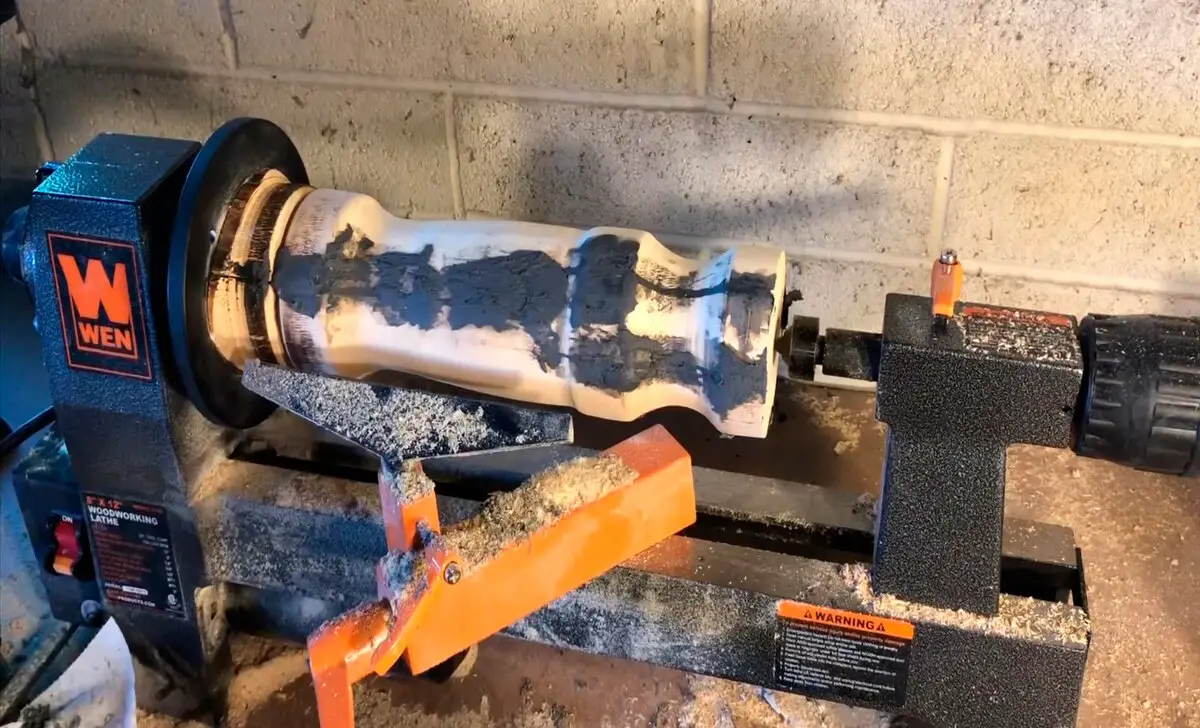
Now that you are familiar with the components and features of a midi lathe let’s walk through a step-by-step guide on how to set up and operate one:
- Secure The Workpiece: Select a piece of wood suitable for your turning project. Mount the wood securely to the lathe’s spindle using a chuck, faceplate, or drive centre, ensuring it is centred and aligned with the lathe bed.
- Adjust The Tailstock: Position the lathe’s tailstock opposite the headstock, aligning it with the workpiece. Firmly tighten the tailstock, locking it into place to provide additional support.
- Set the Speed And Power: Consult the lathe’s user manual to determine the appropriate speed range for your workpiece material. Ensure to adjust the speed accordingly and turn on the power switch of the lathe.
- Begin Turning: Gently bring the turning tools into contact with the spinning wood, starting at a low speed. Gradually increase the speed as you become more comfortable with the turning process. Use smooth, fluid motions to shape and refine the wood, maintaining proper tool rest positioning and angle.
- Inspect And Refine: Periodically stop the lathe and inspect the workpiece, making any necessary adjustments or refinements. Sand the turned wood using progressively finer grits of sandpaper to achieve a smooth, polished finish.
- Apply Finish Or Sealant: Once you are satisfied with the shape and texture of your turned piece, you can apply the desired finish or sealant. Depending on the wood type and personal preference, this could be an oil, lacquer, or wax.
Exploring Different Woodturning Techniques
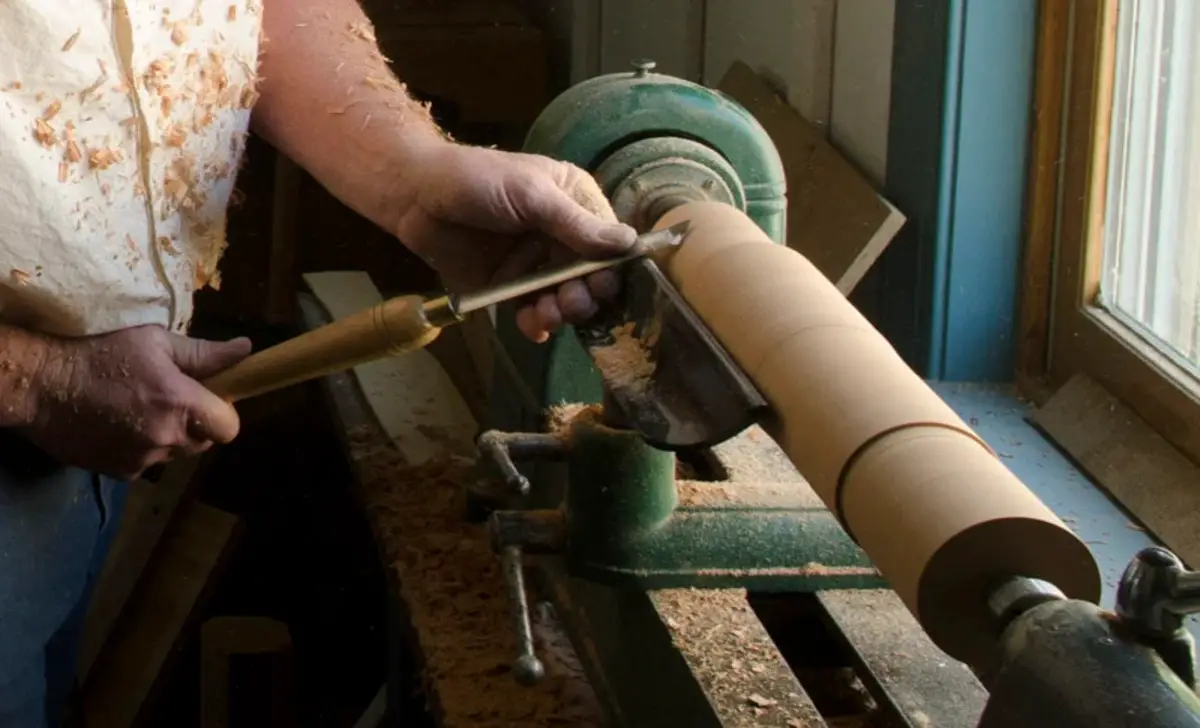
Midi lathes open a world of possibilities for woodturners, allowing them to explore various turning techniques and create stunning woodwork. Whether you’re a professional turner, a hobbyist, or a furniture maker, the versatile nature of midi lathes makes them suitable for a range of projects. Here are a few woodturning techniques that can be achieved using a midi lathe:
- Spindle Turning: Spindle turning is one of the most common woodturning techniques, involving the creation of cylindrical shapes, such as table legs, handles, and balusters. With a midi lathe, you can easily turn smooth, consistent spindles of various lengths and diameters.
- Faceplate Turning: Faceplate turning refers to turning wood mounted perpendicular to the lathe bed, often used to create bowls, platters, and shallow dishes. The faceplate provides stability, allowing woodturners to achieve precise cuts and intricate designs on the face of the workpiece.
- Custom Items: Midi lathes enable woodturners to create custom items like baseball bats, ice cream scoops, and tool handles. You can tailor these small items to your personal specifications, making them functional and unique.
- Ornamental Turning: In the hands of a skilled woodturner, midi lathes can be used to create ornamental pieces, such as finials, decorative knobs, and other intricate wood details. With precise control over speed and tools, woodturners can work with delicate woodstocks to achieve intricate, eye-catching designs.
Troubleshooting Common Issues
While midi lathes are reliable tools, they may encounter common issues during operation. Here are a few troubleshooting tips to help resolve common problems:
- Excessive Vibration: Loose pulleys, banjo, or tool rests can cause excessive vibration. Check and tighten loose parts to minimize vibration, ensuring a smooth turning experience.
- Inconsistent Torque: If you notice inconsistent torque while turning, inspect the drive belts, spindle, and motor. Worn drive belts or motor issues may require replacement or maintenance.
- Spindle Speed Or Power Issues: If you experience issues with spindle speed control or power tools, consult the lathe’s user manual for troubleshooting advice. Following manufacturer recommendations will help identify and resolve specific power-related issues.
- Irregular Flutes Or Grooves: Confirm the tool’s rest and tailstock alignment, as misalignment can lead to irregular flutes or grooves. Adjust and align these components as needed to achieve smooth, uniform turnings.
- Unusual Noise Or Vibration: Any unusual noise or vibration during turning should be addressed immediately. Stop the lathe, inspect for damaged or loose components, and ensure everything is securely fastened before continuing.
Maintenance And Care Of Your Midi Lathe
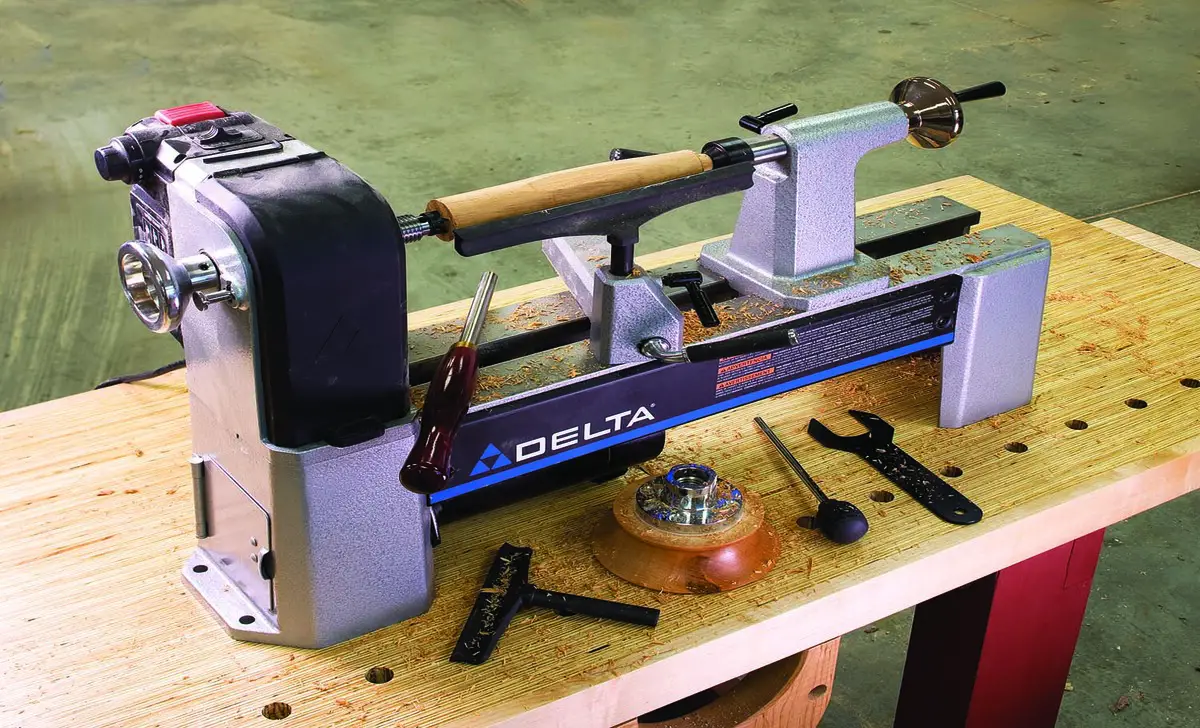
Proper maintenance and care are crucial to keep your midi lathe running smoothly and efficiently. Here are some essential maintenance tasks to consider:
- Lubrication: Regularly lubricate the moving parts of your midi lathe, including the banjo, tailstock, and spindle, to ensure smooth operation. Use appropriate lubricants recommended by the manufacturer.
- Cleanliness: Keep the lathe bed, banjo, and tool rest clean, removing any wood debris or dust buildup. This will help maintain the precision of the lathe and prevent unnecessary wear.
- Monitoring Wear: Check the drive belts, quill travel, and power tools for any signs of wear. Replace these items as needed to maintain optimal performance.
- Inspection And Alignment: Inspect and align the lathe’s pulley, faceplate, chuck, and live centre to ensure everything is in proper working order. This will help avoid performance issues and unnecessary strain on the lathe’s motor.
- Storage: When not in use, store your midi lathe in a dry, dust-free environment to prevent rust and damage. Covering the lathe with a protective cover or cloth can provide an extra layer of protection.
Conclusion
Midi lathes are versatile tools that offer a range of features and benefits for woodturning enthusiasts. Midi lathes balance performance and portability, from compact size to variable speed options. By understanding the components, setting up safely, and mastering various woodturning techniques, you can unlock the full potential of your Midi lathe.
Remember to troubleshoot any common issues that may arise and maintain your lathe properly to ensure its longevity. Whether you’re a beginner or an experienced woodworker, a Midi lathe is a valuable addition to your workshop. Start exploring the endless possibilities and unleash your creativity with the help of this efficient and reliable tool.
Frequently Asked Questions
1.What Is A MIDI Lathe Used For?
A MIDI lathe is a type of woodworking lathe that is smaller and more portable than traditional lathes. People use it to turn wood or other materials to create cylindrical shapes, such as bowls, spindles, or table legs.
2.How Big Is A MIDI Lathe?
The size of a MIDI lathe can vary, but it is generally smaller than a full-size lathe. MIDI lathes typically have a swing capacity (the maximum diameter of work that can be turned) between 10 to 14 inches and a distance between centres (the length of work that can be turned) between 16 to 24 inches.
3.Do I Need A Variable-Speed Lathe?
A variable-speed lathe can be beneficial if you work with various materials and adjust the lathe’s speed to accommodate different turning tasks. It allows for greater control and precision, but whether you need one depends on your needs and projects.
4.What Size Lathe Do I Need To Turn Bowls?
To turn bowls, you will need a lathe with a swing capacity that can accommodate the size of the bowl you want to turn. A lathe with a minimum swing capacity of 16 inches would be suitable for turning smaller bowls, while a larger lathe with a 20-inch or more swing capacity would be better for turning larger bowls.
5.How Do You Set Up And Operate A Midi Lathe?
To set up and operate a midi lathe, start by assembling the lathe according to the manufacturer’s instructions. Mount the workpiece securely between the headstock and tailstock. Adjust the tool rest to the desired height and position. Turn on the lathe and slowly begin shaping the workpiece with your chosen cutting tools, making sure to use proper safety precautions.

